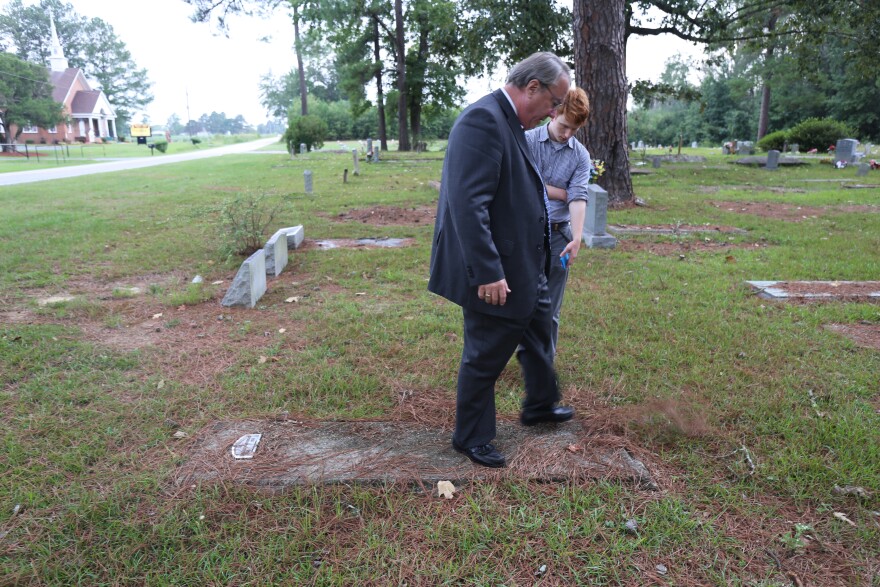Rafting Creek is a quiet stream that winds behind a cemetery, under a road, then through the woods - it's idyllic. But when rain began last year during the historic flood, the Sumter waterway started to fill up. As the storm continued, the area began to flood, sweeping diagonally over the cemetery, road, and woods themselves. The ground under the cemetery became saturated; the pressure of it caused the caskets to pop out of graves. Three thousand-pound vaults with coffins inside were carried several hundred feet into the woods across the road. Cooper McKim has the story of what happened and how they were recovered.

Any town can expect to have a Mayor, sheriff, or librarian, but who do you turn to when caskets have been unearthed en masse? Harvin Bullock, Sumter County Coroner, asked this question after October’s historic flood last year. His primary responsibility as coroner is pronouncing people dead – he didn’t realize casket retrieval was in the job description, but, "nobody else was doing it, and it had to be done, so I did it."
Bullock is a tall, bespectacled man whose run funeral home since the ‘90s. Since then, he’s never seen so many caskets rise from the ground. "We've had some high waters and some floods before, and I understand in the past they've had this issue, but it was not to the extent it was this time," Bullock says.

There were sixteen unearthed coffins in Sumter County. Thirteen were at Rafting Creek and several others were at private cemeteries.
Sumter citizens started calling Bullock asking if their deceased were washing away. For most, the answer was no, but "I had one whose aunt had come up and she had floated down the creek, and I dealt with her a good bit. She was really upset," he says.
Bullock started and finished casket retrieval and re-interring at nearby private cemeteries. With the help of the pre-existing staff, it was a swift operation. Rafting Creek was a different story.
"Really and truly when you get down to it, the vaults were not buried properly."
There, the coffins weren’t just outside their graves. Some were several hundred feet away, stuck in the streambed across the street. Bullock commissioned the help of the Department of Natural Resources. Several vaults were stuck in a stream bed across the street from the graveyard. DNR and the local sheriff's office used a John Boat to transport the casket downstream then pulled it up to the DNR truck with a wench.

Ed Laney operated that wench. He says "everybody's emotions were in check, no crying that I can remember, and there could have been some that I didn't see, because I was down in the woods, most of the time."
The process took two days. Bullock says if it happened again, he likely wouldn't do anything different. The only way to stop this problem is for Sumter’s graveyards to follow better burial practices.
Bullock explains: "Really and truly when you get down to it, the vaults were not buried properly. In order to bury a vault properly, it's gotta be so far in the ground, covered and that sort of thing. And the lids were really at the top of the ground."

Bullock says he encouraged the deacons at the Baptist church across the street to alter their burial standards in the future.


